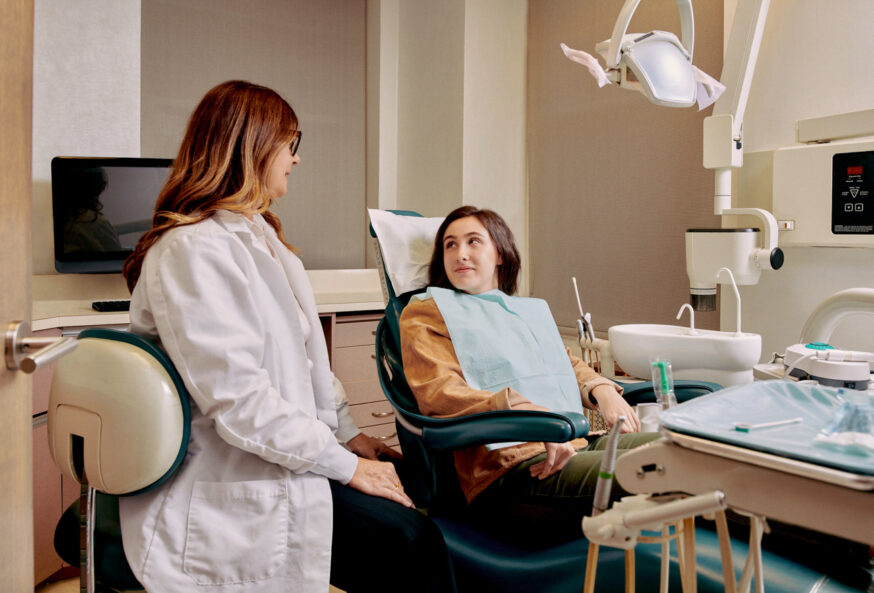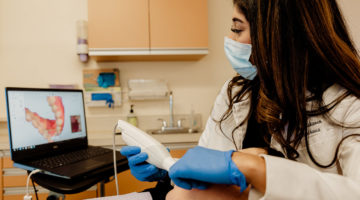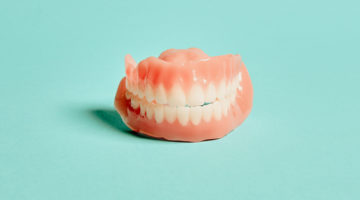It is never easy to start your dental practice as a specialist or general practitioner. You must learn about the practice you are joining or creating and the patients you are taking on. Most of all, you must learn how to develop relationships and patterns of case acceptance. In doing so, you scale and contribute to the practice. In a recent interview with one of Dandy’s Subject Matter Experts, Dr. Bartusiak of Washington, Pennsylvania, shared three core resources that dentists need to get right to succeed in their field. They are: be culture driven, incorporate active listening, and get the best technology.
Your practice must be culture driven
Culture is the “buzzword” of the moment. Culture is at the forefront of business, no matter the field or the industry, especially as it applies to the employee experience. Hire people who fit into your company and can add to the environment. We hear a repeated phrase: “You can train for skills, but not for personality and character.” In fact, in the best-selling book “Good to Great: Why Some Companies Make the Leap…And Others Don’t,” author and advisor Jim Collins stated, “The old adage ‘People are your most important asset’ is wrong. People are not your most important asset. The right people are.”
Hiring the right people is the first step in creating a culture that retains your customers and employees. Also, it contributes to case acceptance. Each team member is part of a continued effort to open the patient to the possibility of case acceptance. Thus, it would be best to consider their personalities, character traits, and work ethics.
To Dr. Barry Bartusiak, a Dandy dentist and customer, hiring the proper infrastructure is so vital to his practice that he hired a client to work in his reception area. “She became my patient in February, and I hired her in March.” Dr. Bartusiak was impressed by her personable behavior. She is the first face a patient sees and greets everyone by name. Dr. Bartusiak has a saying for his practice “Nothing starts without a sale.” If you want a person to become a patient, the patient to accept a treatment plan, and stay your patient, the environment and employees have to sell your practice.
Creating a welcoming environment is only the initial part of the integrated effort that every team player partakes in client care. Dr. Bartusiak explained that learning to allow each person to be a knowledgeable and trained employee for that role is crucial. In other words, let them be the expert in the room. For financial issues, the doctor should not enter the discussion. Truthfully, no one wants to have that conversation. That is why he hired a capable billing staff who knows insurance, payments, and the financiers that fund the treatments and procedures.
Remember, you want your patient to love coming into your practice. That includes knowing the small things about them and calming them with a personal interaction while in the chair. The team you create fosters the culture that your patient buys into. If you don’t give them a place of comfort and understanding, they will not be open to case needs and proposals and will find a dental practice that will be more to their liking.
Active listening
If anyone had said that “listening” was one of the best techniques used on patients in dentistry, many might have denied it. However, modern healthcare is finally discovering that listening is not just a soft skill technique to gain insight into the patient. It is a resource that allows everyone who is customer-facing to have a lasting impact on them.
In a Harvard Business Review article titled, “Making Time to Really Listen to Your Patients,” the authors iterated the importance of listening. “Actively listening to patients conveys respect for their self-knowledge and builds trust. It allows physicians to assume the role of the trusted intermediary who not only provides relevant medical knowledge but also translates it into options in line with patients’ own stated values and priorities.”
Dr. Bartusiak employs active listening at every stage of patient care. From the time they step through the front door to the moment they sit in the dental chair, active listening is employed. Every chance to attend to the patient in a very human-centric way improves their care and the possibility of case acceptance. As a trusted intermediary and advisor, Dr. Bartusiak can share with the patient what is best for them, and the patient will be more inclined to listen.
For example, if he knows that the individual in the chair is nervous, he diverts their attention to something they are passionate about. Grandchildren, gardening, and recent books are all topics that patients may bring up in conversation. By promoting and engaging in active listening, the doctor shows empathy and interest in the patient beyond the procedures. It is not only about their personal lives that Dr. Bartusiak hears. It is also what they desire to have done to their teeth, what they want their smile to look like, or what they can “handle” from a procedural standpoint.
Dr. Bartusiak is very careful to take every opportunity to educate the patient, but in the end, they are the customer. They will let you know what they are ready for. He must often simply reply “Okay.” and comply with the patient’s wishes. However, he has found that since his transformation to digital dental practice, educating the customer and convincing them to accept his advice has become more uncomplicated. For the modern patient in the digital dental practice, seeing is believing.
Get the best technology
When asked what the third recommendation dentists need in their repertoire, Dr. Bartusiak didn’t skip a beat with the answer—get the best dental technology.
In the old world of case acceptance, it was significantly harder to prove your case to the patient that there were priorities in dental care. Why? Simply put, everything was black and white. The old x-rays were difficult to show someone that cloudy shapes and white spots on a blackish gray background were something critical to treat. To the patient, if they can’t see it, it isn’t exactly real. Enter the world of digital dentistry reality.
Dr. Bartusiak stated that “The intraoral camera changed the whole game. It just changed the whole game.” According to the doctor, digital transformation has made everything easier. First, it is easier for his staff. He explained “If I said to our hygienist, I’m taking the CBCT (3D cone beam computed tomography) out, we’re going to send it back, and we’re going to go back to the old style of dentistry. She would then hand in the resignation letter. That’s just a given.”
Next, it was easier for their patient, especially those with a horrible gag reflex. The old “goop” or alginate can have a negative effect on many. But the intraoral scanner alleviates that issue. “You won’t have a worry in the world because you’re not going to have any of that goop,” Dr. Bartusiak said. Without that fear, the patient can settle back in the chair, and before they know it, the session is over.
As for all the items needed to perform the transformation, embrace them because it leads to better dentistry. But there are three initial implements and tools that Dr. Bartusiak advised dentists to get.
- The first is the intraoral scanner. “I would call Dandy because there is not an expense,” Dr. Bartusiak emphasized. The Dandy rep convinced him after a long conversation. “I kept him in our practice for about an hour, just drilling him with questions,” he said. Dr. Bartusiak eventually was “hooked” after he realized he couldn’t find a loophole that would be a detractor to the relationship.
- The second thing he advised to invest in would be a camera. “I would get a camera because seeing is believing [for the patient]…You’re still convincing them, but it isn’t you convincing them. They are convincing themselves because they’re watching it. So that creates this greater acceptance rate, correct?” He further explained that a good camera can be about $3000.
- Dr. Bartusiak’s last suggestion was the CBCT or 3D cone beam computed tomography. This technology takes images of the underlying bone structure, including nerve pathways and soft tissues. It can be incorporated into your practice for about $1000 per month for 60 months.
Demographically, some patients are easily won over by digital dentistry. Gen Z and millennials are naturally more inclined to be drawn in by technology. However, seeing is always believing for patients of any age. Screens and views tell the story to the person who needs to be convinced of the repair and restorative work that must be done. It creates an acceptance case rate that causes growth for a practice.
Ultimately, digital dentistry, especially the intraoral scanner, is a marketing tool with guaranteed outcomes. It all comes down to proving to the patient what is best for them, that they are cared for, and accepting the case plan suggested by the dental practitioner. For Dr. Bartusiak, his practice of digital dentistry, with Dandy being a big part of it, has the proof with an 85 to 90% case acceptance rate. With numbers like that, it is something for all dentists to consider.



